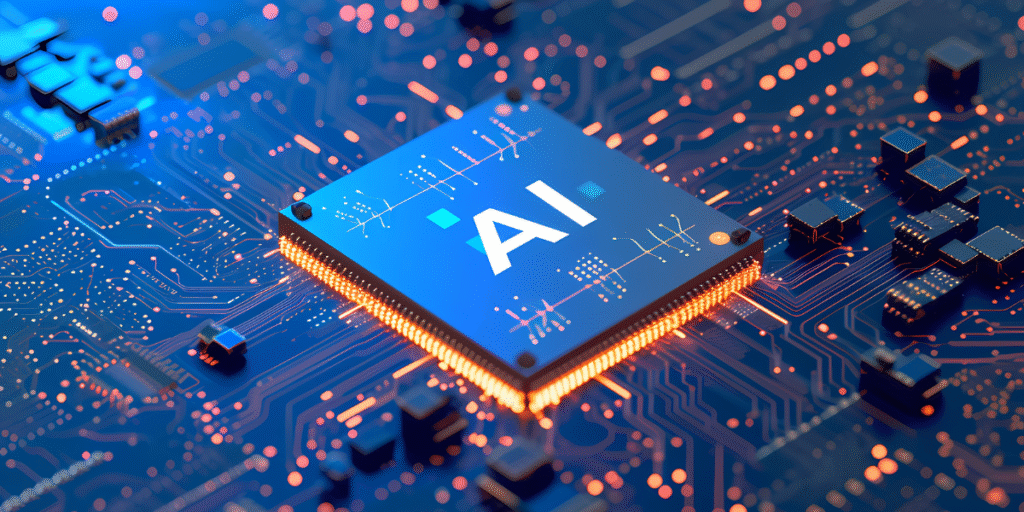
Prospective computing students often ask how artificial intelligence (AI) is reshaping both the tech industry and computing education. To answer these questions, we spoke with Tom Lane, Program Head of the Computer Information Technology (CIT) Diploma program, and Chi En Huang, Program Head – Curriculum Leadership and Option Head of AI and Machine Learning in the Computer Systems Technology (CST) Diploma program. They shared what students can expect from a BCIT computing diploma – and their future tech careers – in a world increasingly shaped by AI.
Q: How do you expect junior-level jobs to change with the rise of AI programming tools?
“This has been a raging debate, and I don’t have a crystal ball, but I expect junior-level jobs to be less junior,” says Tom Lane. “Contrary to some of the rhetoric, I don’t think that practitioners using AI tools will need to know less. In fact, I believe they will need to know more because of two changes.
The first change is, because of the ability of AI to generate what looks to be competent, complex solutions that may hide hallucinations or errors, the skill set to evaluate and interpret code will increase.
The second change will, to a certain extent, be the focus: there might be a slight de-emphasis on generating new systems versus analyzing existing ones. The reality is that this has always been the case. In practice, you spend far more time reading code and examining systems than you do generating new ones. So the impact of AI is just doubling down on that process.”
Chi En Huang adds, “Junior-level jobs will not only require software development fundamentals as in the past, but also awareness and continual curiosity of AI tools.” This, he says, can rapidly increase a developer’s proficiency and effectiveness on the job.
Q: How is BCIT Computing adapting to AI’s industry impact?
“AI is here to stay, and we need to embrace it and prepare students for how industry is also transforming and adopting AI,” says Chi En.
“We continue to focus on fundamentals, especially in the first year. Later on, we encourage students to use AI tools to explore blind spots, alternative solutions, domain knowledge, and improve productivity.”
Tom adds: “Faculty are actively exploring new AI tools – many of which are available to us through academic subscriptions.
We’re also looking at changing the programs to emphasize the understanding aspect: having students grapple with a wide range of solutions, explaining how they work and being questioned about them.”
Q: How does AI affect students and the way they learn?
Tom: “AI systems don’t just have an impact on industry. They have an effect on the individuals who are using them, particularly students.
We’re considering tools designed specifically for learning, even if they differ from those used in industry, to better support student understanding.
The goal in education isn’t to produce an artifact, it’s to learn. Writing code or configuring systems is part of that process.
Curriculum is something we continually review. Some of the changes are subtle, and some of them will be more structural moving forward.”
Chi En: “AI can personalize learning to a level that an academic program, such as CST, which caters to a diverse group of students, is not yet able to. Even before generative AI, students personalized their learning by using online tools and videos to match their learning styles.”
Q: Do you integrate AI skills throughout your program?
Tom: “I’m going to say yes – with caveats.
We’re beginning to grapple with the key AI skills. It’s essential to establish validity in evaluating an answer, as AIs can present themselves as authoritative and provide responses that appear credible. But they might not be.
Therefore, the onus is on the user; they are ultimately responsible for whatever the AI produces if they use that output.
Another thing we do is take a look behind the curtain and explore the technologies that power AI. CIT is not a Machine Learning program, but we explore how AIs work and how to use them effectively.”
Chi En: “All of our first year students do an end-to-end app project that draws in what they’ve learned so far, and includes an AI component.
And we’re actually doing a program curriculum review for CST, which includes updating our program goals, such as integrating AI skills to ensure that every graduate can understand, use, and critically evaluate AI technologies as a core competency.”
Q: What’s the biggest challenge when it comes to using AI in education?
Chi En: “We are looking to instil in students how AI tools can and should be used as a learning tool, as opposed to a tool for cheating.”
Tom: “AI in education is an ongoing concern. It’s top of mind for everyone, and we’re actively working on it.
The biggest challenge is how to facilitate AI usage and learning without short-circuiting the learning process, and we are not alone in figuring this out.”